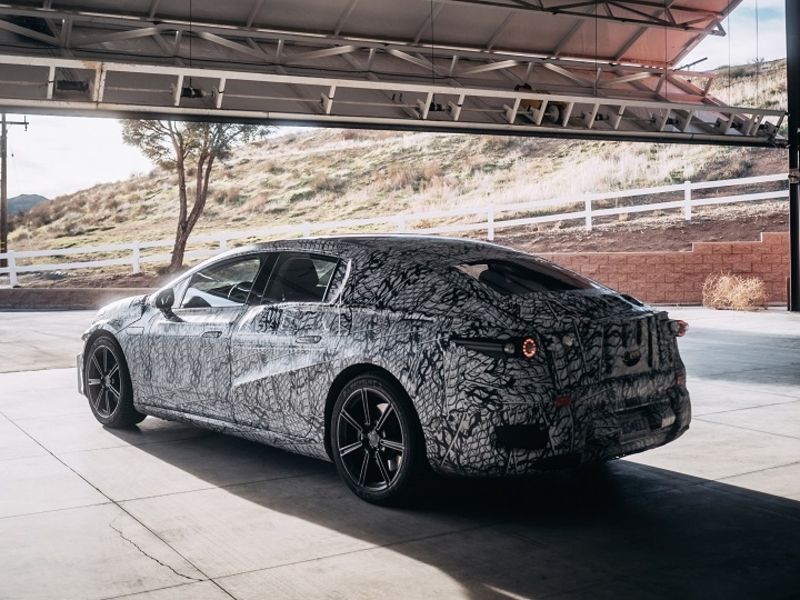
Mercedes-Benz will finally offer an electric range that is competitive with Tesla when it launches the EQS next year.
The Daimler subsidiary says its full-electric rival to the Model S will travel more than 700 km (435 miles) on a single charge, based on the WLTP testing cycle.
“The EQS will set the benchmark,” Daimler CEO Ola Kallenius told the company’s shareholders earlier this month. “When it comes to luxury, comfort and safety, the EQS is in the same league as the S-Class.”
The long-range version of Tesla’s flagship sedan can travel 609 km (378 miles) on a single charge, based on the WLTP cycle.
Currently, the best range Mercedes offers is 471 km (293 miles) in the EQC midsize crossover, but that figures is based on the less stringent NEDC testing standard. On the WLTP cycle the EQC’s range would be significantly less.
The EQS, slated to be built in Daimler’s state-of-the-art Factory 56 in Sindelfingen, near Stutgart, will be underpinned by a platform dedicated to battery-electric vehicles called EVA2.
Daimler said that using the EVA2 platform allows Mercedes to offer improved packaging and design compared with the EQC, which employs a version of the rear-wheel-drive MRA platform usually used for combustion engine cars.
Daimler used MRA on the EQC to increase assembly line flexibility at the automaker’s Bremen plant, where full-electric and non-electric cars are made on the same line. Using MRA also reduces the financial risk that comes with having a dedicated platform. BMW follows a similar route as it has so far refused to invest in an architecture solely for electric vehicles.
Thus far, the EQC has been a commercial flop as fewer than 500 were registered in the first half of this year in Germany. Despite the poor initial result in one of its key markets, Daimler has targeted overall production of 50,000 EQCs for this year.